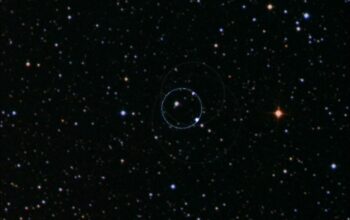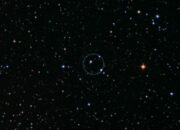Stars, those incandescent beacons scattered across the vast tapestry of the night sky, have captured the human imagination for millennia. Their shimmering light fosters a sense of wonder, inspiring humanity to ponder essential questions about existence, life, and the universe. One such inquiry that has intrigued astrophysicists and laypeople alike is whether stars can grow too large. This exploration delves into the intricate physics governing stellar formation, evolution, and ultimate demise, examining the majestic giants of the cosmos and the definitive limits to their expansion.
The genesis of a star begins within the cold, dense cores of molecular clouds, where gravitational forces incite nuclear fusion. Variations in mass during this formative phase dictate the star’s life cycle, including its potential to achieve significant size. Generally, stars form from vast amounts of gas—primarily hydrogen and helium—collapsing under gravity to create a protostar. The compressive forces raise temperatures and densities sufficient for nuclear fusion to ensue. This process is where the discussion of stellar limits begins, as not all stars are destined to grow big.
Stars are categorized by their mass, which ultimately determines their lifecycle. The most massive stars, often referred to as “hypergiants,” can have masses exceeding 100 solar masses. These towering giants are not merely extravagant in size; they exhibit distinctive polarities in their stellar environments. The interaction between radiation pressure generated by nuclear fusion in their cores and gravitational force creates a delicate equilibrium, crucial for stability. Indeed, a hypergiant like VY Canis Majoris is an astounding example; it boasts a radius around 1,420 times that of the sun, and its sheer magnitude challenges our comprehension of stellar phenomena.
However, as one contemplates the formidable volumetric growth of such stars, a critical question arises: Can they become too large? The answer lies in the equilibrium established by radiation pressure battling gravitational collapse. When a star reaches certain mass thresholds, its internal dynamics begin to divulge limitations. The Eddington limit—a pivotal concept in stellar astrophysics—articulates this notion by indicating the maximum luminosity a star can achieve while maintaining balance between the outward push of radiation and the inward pull of gravity. Exceeding this limit can provoke significant consequences, often destabilizing the star’s structure.
In the late stages of their lives, massive stars progress into the red supergiant phase, a colossal transformation characterized by extensive nuclear burning. This phase witnesses the burning of successively heavier elements, culminating in the creation of iron in the core. Iron represents a point of no return for these stellar titans; fusion contributes negligible energy when this element forms, prompting the eventual implosion of the core and shedding of outer layers. This extraordinary process gives rise to spectacular supernovae, momentous events that not only obliterate the star in magnificent brilliance but also disseminate heavy elements into the cosmic expanse. Such phenomena underscore the multifactored nature of stellar evolution and mortality, revealing that size alone does not define a star’s journey through the cosmos.
The question of limits extends beyond mere physical constraints; it also encompasses chemistry and astrophysical environment. Some massive stars, under specific conditions, can manifest phenomena such as pulsational instability. In these stars, periodic changes in brightness reflect dynamic internal changes caused by gravitational and thermal oscillations, leading to variations that could influence their ultimate size. This intrinsic variability adds layers to the complexity of defining “too big,” considering that some stars might oscillate around idealized thresholds.
Moreover, the interplay with surrounding stellar systems influences how significantly a star can grow. In binary or multiple star systems, mass transfer can occur between companions, enabling the gaining star to increase its mass rapidly. This surge in mass may propel a star toward an extreme, yet often transient, state. Such interactions introduce a fascinating juxtaposition between independent stellar evolution and collective behavior, emphasizing that stellar limits cannot be evaluated in isolation.
One must also consider the landscape of theoretical astrophysics that explores beyond conventional boundaries. Current initiatives aim to enhance our understanding of brown dwarfs and supermassive stars—astronomical entities that verge on the definitions of a star, yet exist in categories of their own. Theoretical predictions regarding black hole formation and the existence of neutron stars further illuminate possibilities beneath the umbrella of high-mass stars. Each angle of exploration opens up a rich dialogue about the nature of limits and the ramifications of stellar growth, suggesting that the pursuit of comprehension transcends mere numbers.
As scientists advocate for increased exploration through telescopes and spacecraft, the indelible connection between humanity and the cosmos remains potent. The examination of colossal stars beckons us, unraveling the narratives behind their existence and demise. While we contemplate whether stars can indeed grow too large, we realize that the real intrigue lies in the interconnectedness of cosmic phenomena and the delicate balances maintained within the fabric of the universe. Each twinkling point of light above resonates with stories woven through the eons, beckoning us to seek knowledge where science and marvel meet.










